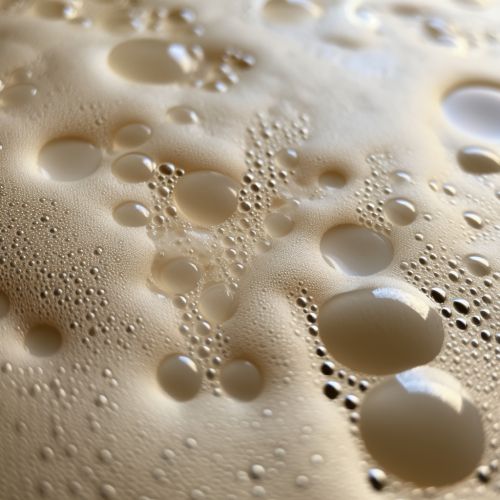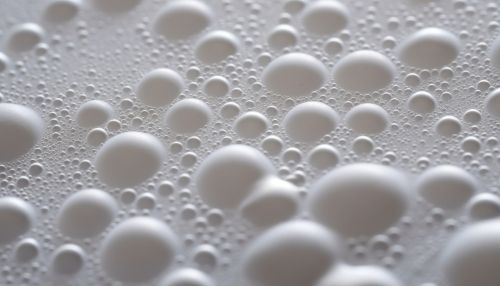Foams
Introduction
Foams are a type of colloidal system, characterized by a dispersion of gas bubbles in a solid or liquid medium. The term "foam" can also refer to anything that is analogous to such a phenomenon, such as quantum foam, a theoretical concept from quantum mechanics.


Formation and Stability
Foams form when a large amount of gas is mixed into a liquid or solid. The creation of a foam involves the trapping of gas bubbles, which are then stabilized by a thin film of the liquid or solid. This process is known as foaming and can occur naturally or be induced by mechanical actions or chemical reactions.
The stability of a foam is determined by the balance of several factors, including the surface tension of the liquid, the size and distribution of the gas bubbles, and the presence of any foam-stabilizing or foam-destabilizing agents. Surfactants, substances that lower the surface tension of a liquid, are commonly used to stabilize foams.
Types of Foams
Foams can be classified into different types based on their medium, structure, and properties.
Liquid Foams
Liquid foams, such as beer foam or whipped cream, consist of gas bubbles dispersed in a liquid medium. These foams are typically unstable and will collapse over time as the liquid drains from the foam structure.
Solid Foams
Solid foams, such as polyurethane foam or styrofoam, consist of gas bubbles dispersed in a solid medium. These foams are typically stable and can maintain their structure for a long time. Solid foams are often used for insulation, cushioning, and lightweight construction materials.
Open-Cell and Closed-Cell Foams
Foams can also be classified as open-cell or closed-cell based on the connectivity of the gas bubbles. In open-cell foams, the gas bubbles are interconnected, allowing gas or liquid to flow through the foam. In closed-cell foams, the gas bubbles are isolated from each other, making the foam impermeable.
Applications of Foams
Foams have a wide range of applications in various industries due to their unique properties.
Food and Beverage Industry
In the food and beverage industry, foams are used to create texture and visual appeal. Examples include the foam on a cappuccino, whipped cream, and meringue.
Construction Industry
In the construction industry, foams are used for insulation and lightweight construction materials. For example, expanded polystyrene (EPS) foam is commonly used for insulation in buildings.
Medical Industry
In the medical industry, foams are used in various applications such as wound dressings and medical implants. For example, polyurethane foam dressings are used to absorb exudate from wounds and promote healing.
